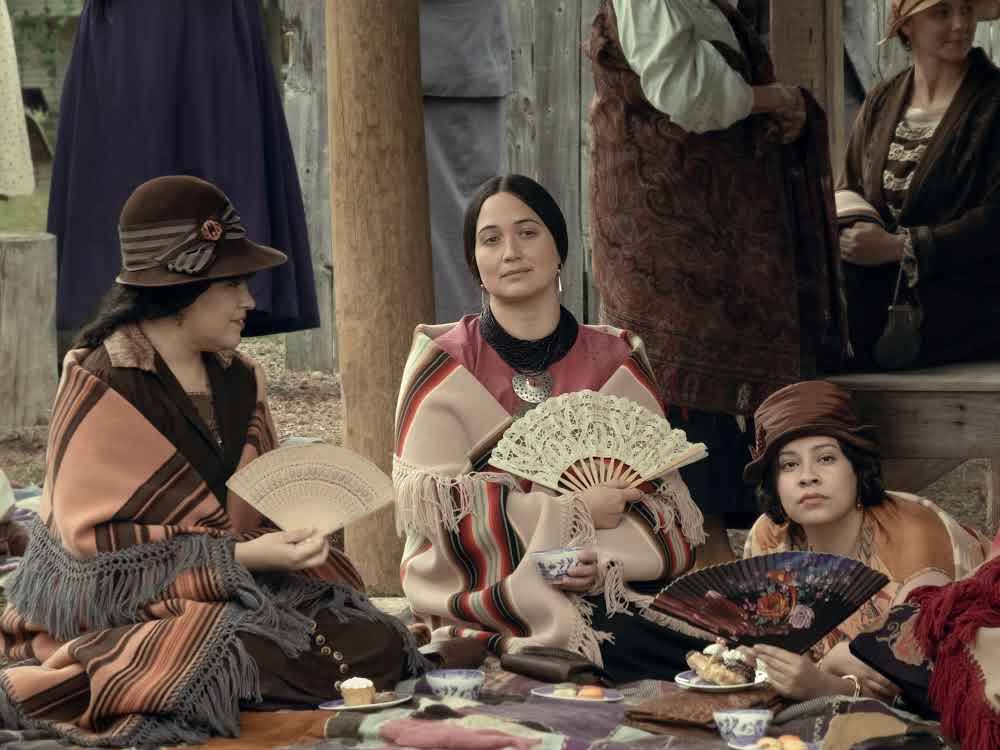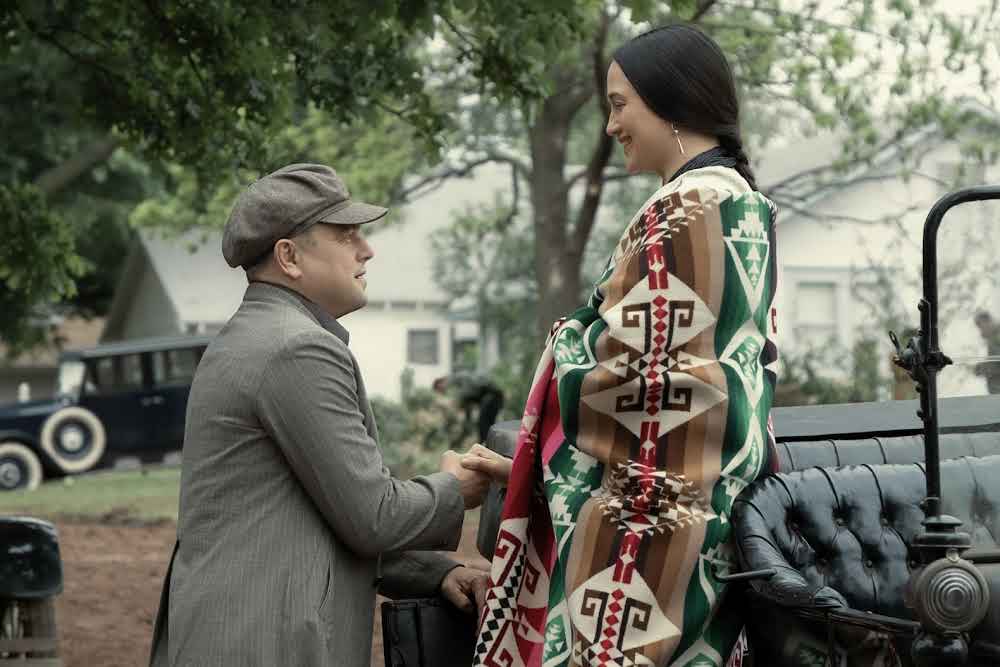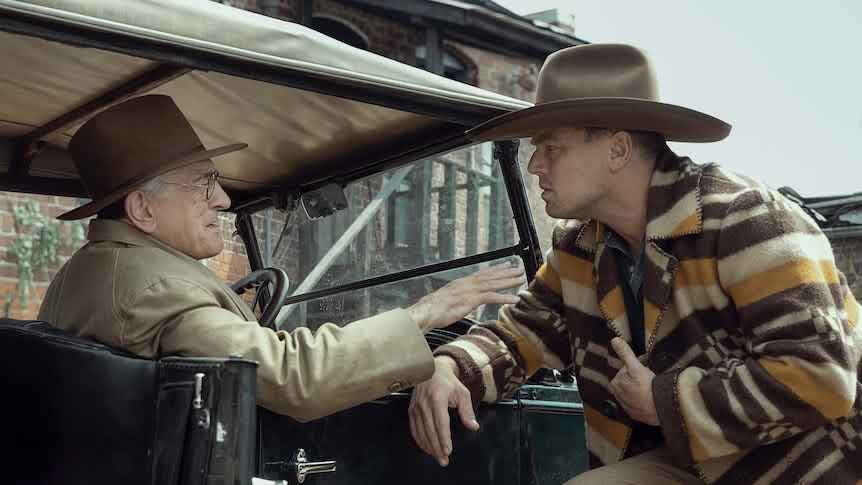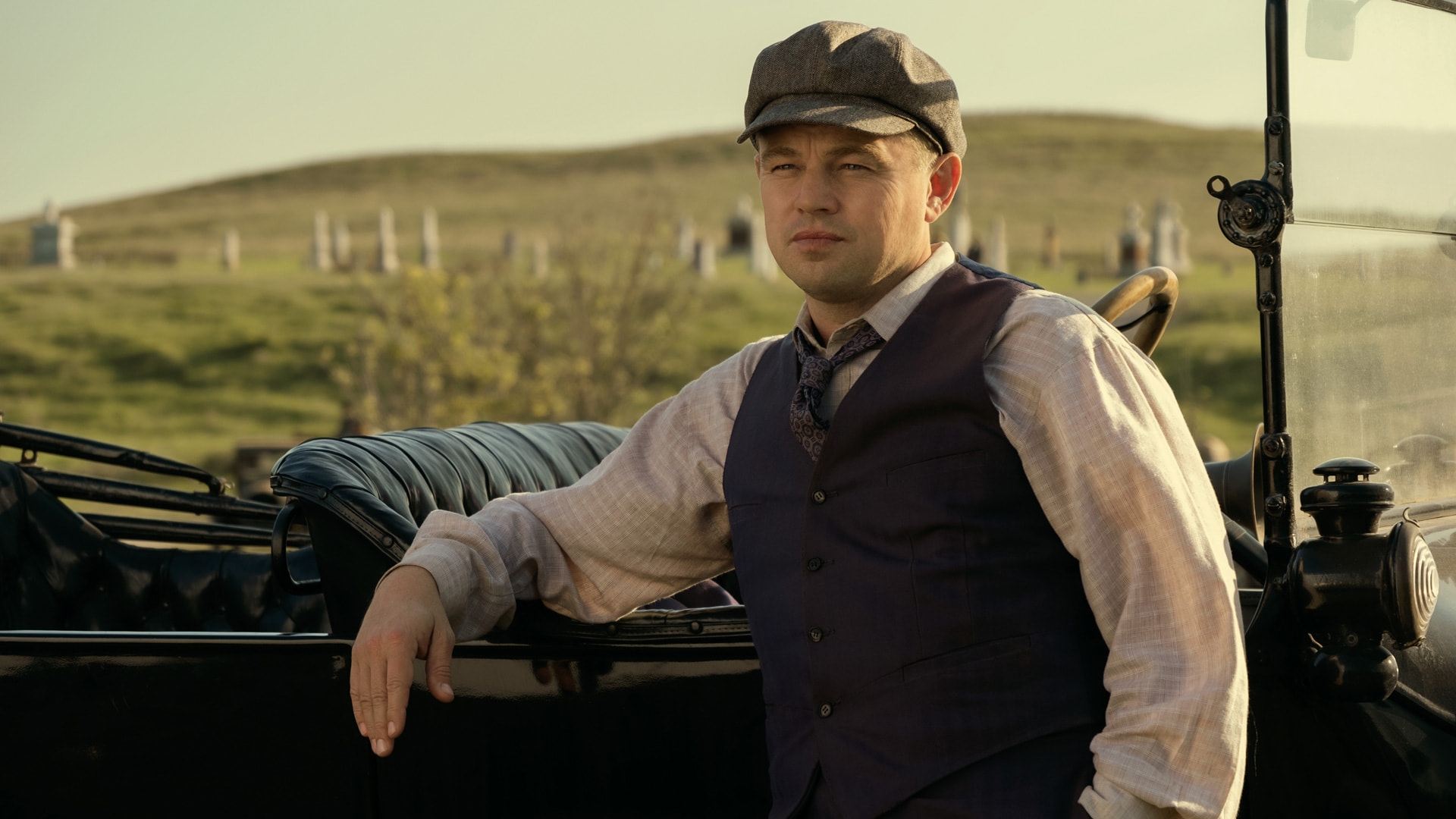Martin Scorsese’s Killers of the Flower Moon deals with a horrific chapter in American history, the murders of Osage peoples in the early 20th century. In 1897, the Osage Nation discovered that their reservation in Oklahoma contained enormous deposits of oil. The Osage became extremely and unexpectedly wealthy almost overnight. This aroused the resentment of the white Americans they lived alongside, who had been accustomed to Native Americans living in penury.
It also attracted the murderous greed of a ring of Oklahoman whites, which included leading men of the community. Through fraud and marriage, these men put themselves in a position to inherit the oil rights of individual Osage, often women, and then murdered them. This took place with the tacit approval of local police, and the murders were only investigated when the newly-formed FBI involved itself in the case. The total number of victims and of culprits is unknown, as many deaths were not treated as suspicious, and only a small group of men were ultimately prosecuted.
It’s a sad, horrible story. The combination of sociopathic violence and official indifference or complicity is typical of the histories of native peoples worldwide. You can see why Scorsese was drawn to it. As some critics have pointed out, many of his films hint at how such brutality is the motive force of American history.
The protagonist of Killers is Ernest Burkhart, played by Leonardo DiCaprio. At the beginning of the film, Ernest returns from World War I to live with his uncle, William King Hale, played by Robert De Niro. Hale is a rancher and local potentate, who maintains friendly relations with the Osage whilst privately telling Ernest that they are a good-natured people doomed to extinction. He finds work for Ernest as a driver; one of his first regular clients is a young Osage woman, Mollie Kyle, played by Lily Gladstone. They form a flirtatious relationship, and Hale suggests that Ernest should marry her, hinting at the significant wealth he will stand to inherit. This begins a campaign of murder and terrorism against Mollie’s family and other Osage, all with the aim of appropriating their oil rights.
Gladstone has received a lot of attention for her performance as Mollie, and it’s very much deserved. She brilliantly depicts a woman who is at once level-headed yet romantic, worldly but preferring to trust in the goodness of others. She identifies early on that Ernest is a “coyote” who wants her for her money; but she also believes that he will be a decent, reliable husband. The relationship between her and Ernest is depicted in the film’s first half with a lot of sensitivity and nuance. The film shows very well how Ernest’s paternal care for Mollie can go hand in hand with his participation in a scheme to annihilate her family. This combination of sentimentality and heartlessness is reflective of the broader attitude of his society to native peoples.
For his part, De Niro is excellent, portraying a truly sinister figure in Hale. In many ways, Hale’s view is simply a more developed version of Ernest’s: he has a kind of facile affection for the Osage which is a complement to rather than a cover for his cold-bloodedness. All of the performances in this film are very good, but one thing that struck me was a slight incongruity of style between the approach taken by the actors depicting the Osage characters and that taken by DiCaprio, De Niro, et al. The Osage performances seem to be more understated and naturalistic than those of their more high-profile counterparts, and in some scenes the two styles do not quite meet in the middle.
Nevertheless, the film does a great job of depicting the strange domestic intertwining of these two groups. A sense of palpable doom pervades the wonderfully rendered scenes of everyday life. However, I think that the film does suffer somewhat in its second half. A lot of the colour and texture of the first act is lost. This is probably inevitable given the overpowering bleakness of the subject matter, but it also goes hand-in-hand with Mollie effectively dropping out of the plot, and the focus shifting almost exclusively to Ernest, as he attempts, clumsily, to frustrate the efforts of an FBI investigator, played by Jesse Plemons. The film ultimately becomes more of a crime drama, centred on the conscience of the guilty individual, when earlier the film really feels as if it were depicting the complexity of relations in a colonial society.
Killers of the Flower Moon also delivers its epilogue using a rather strange, self-conscious device that seems to gesture at the process by which real-life suffering is transformed into true crime entertainment for the mass market. It almost feels as if Scorsese sensed the limitations of his approach and wanted to highlight them for the audience. But it does have the effect of alienating the viewer somewhat from the events of the previous three and a half hours.
With that being said, I enjoyed the first half of Killers as much as I’ve enjoyed any Scorsese movie other than Goodfellas, and it really is incredible for a director to be operating with so much ambition and freshness of insight so late in their career. Killers is not always perfectly assured, but it does depict very well the hopelessness of individuals in a society ruled by greed and violence.
Killers of the Flower Moon is currently playing in cinemas and will debut on AppleTV+ at an unspecified date in the near future.



